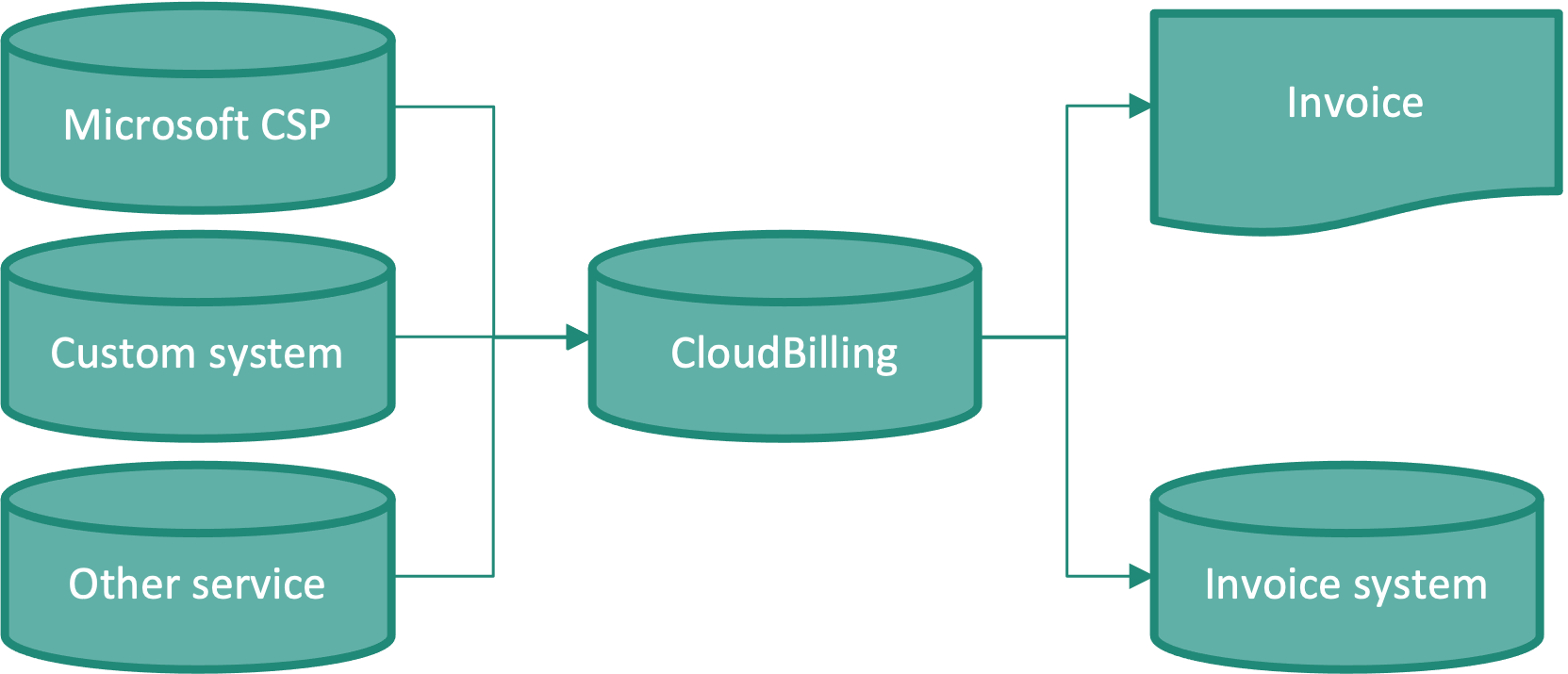Configuration
The Configuration chapter aims to explain the basic CloudBilling concepts which are needed to configure a CloudBilling environment. The Chapter consists of subchapters which each explain one of the CloudBilling concepts in more detail. Each subchapter will also explain the step-by-step guides on how to configure the corresponding concept. The subchapters can be found in the table of contents below.
Table of contents
- Customers
- Products
- Pricing Rules
- Purchases
- Invoices
- Messaging
- Connectors
- Administration
- Dashboard
- User Account
This Chapter will go into further detail regarding the concepts and functionalities of CloudBilling. The information provided in this Chapter will be based on the best practices for the use of the CloudBilling platform. Any buttons or fields that should be used in the CloudBilling tool are indicated with [Square brackets and bold text]. The following paragraph will simplify and explain the CloudBilling process.
CloudBilling receives purchase information with linked product information and customer information. This information can be derived from different sources, such as cloud providers or a customer’s own solution. Within CloudBilling, the received information is processed by configuring the pricing schemes of the customer into CloudBilling, which will supply the information for the invoices that need to be generated. Additionally, the information from CloudBilling can be extracted again for use in another system. Below in Figure Configuration 1, this simplified process is visualized.
Figure Configuration 1: Simplified CloudBilling process, receiving purchase information
To create an invoice, CloudBilling needs the earlier mentioned purchase information, containing product and customer information to have all the necessary information for the processing and saving of the invoice. Figure Configuration 2 describes with full squares the steps of the process, above these steps the necessary data is described in squares with a folded corner. The following steps describe the process flow broadly:
- A purchase record is added, which contains (minimally) information about the customer, the product, the quantity, and a purchase date.
- Pricing rules relating to the purchase information are executed.
- A pricing rule, as the name suggests, defines a price for a purchase. As the purchase record has information about the customer and the product, only pricing rules related to that specific combination of customers and products, are executed.
- The calculated output of pricing rules is used in combination with, for example, a PDF transformation to create an invoice.
Figure Configuration 2: Simplified CloudBilling process, creating an invoice

